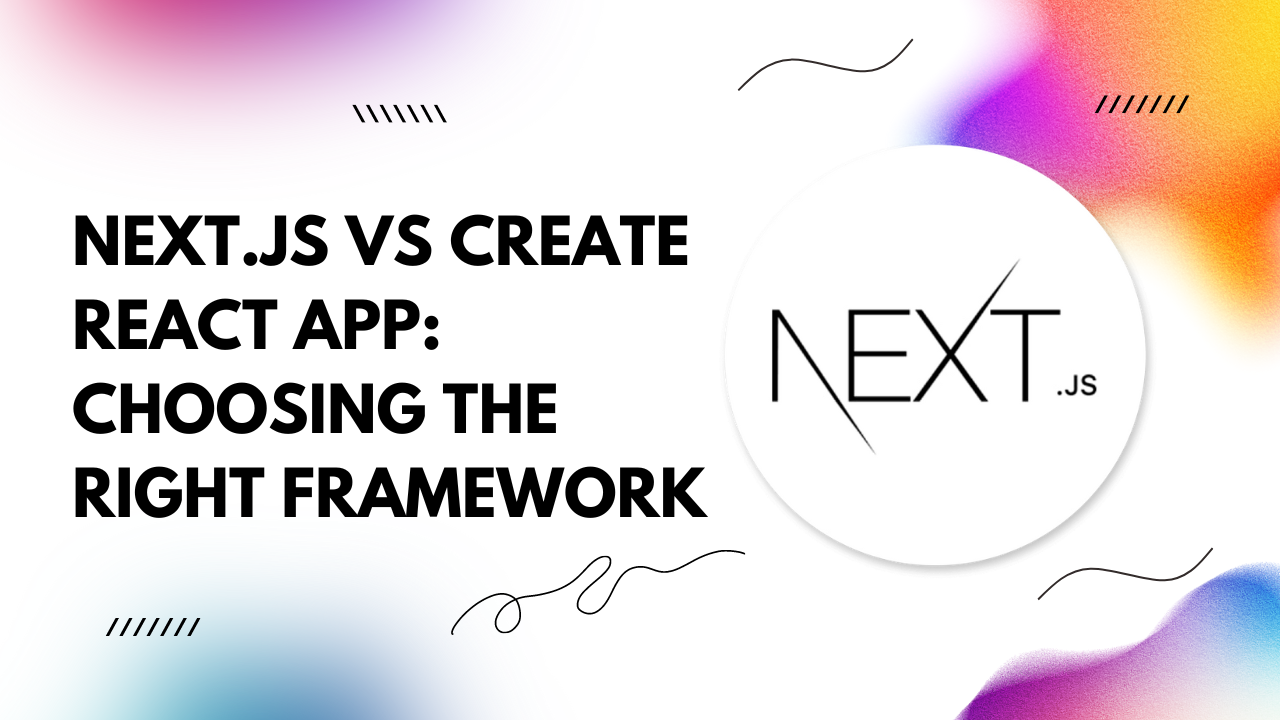1. Introduction:
Next.js and Create React App (CRA) are both popular choices for building React applications. While CRA provides a straightforward setup for React projects, Next.js offers additional features for server-side rendering (SSR), static site generation (SSG), and more.2. Setup and Configuration:
Create React App simplifies the setup process by providing a single command to bootstrap a new React project:npx create-react-app my-app
npx create-next-app my-app
3. Routing:
Routing is a crucial aspect of web development, and both frameworks handle it differently. CRA relies on client-side routing, meaning routing changes are handled by the browser without involving the server. Next.js supports both client-side and server-side routing out of the box, providing better SEO and performance optimization.4. Server-side Rendering (SSR) and Static Site Generation (SSG):
Next.js shines in its support for server-side rendering and static site generation. SSR improves initial page load times and SEO, as content is pre-rendered on the server and served to the client. SSG takes this a step further by generating static HTML files at build time, resulting in even faster page loads and improved scalability.5. Code Splitting:
Both frameworks support code splitting, allowing you to split your code into smaller chunks to improve performance. CRA uses dynamic imports for code splitting, while Next.js offers a more streamlined approach with automatic code splitting based on your page components.6. Deployment:
Deploying applications built with CRA is straightforward and can be done on static file hosts or platforms like Netlify and Vercel. Next.js applications can also be deployed on these platforms, with the added advantage of server-side rendering and static site generation for improved performance and SEO.7. Conclusion:
In conclusion, choosing between Next.js and Create React App depends on your project requirements and preferences. If you need a simple setup with client-side routing and basic functionality, CRA might be the way to go. However, if you require server-side rendering, static site generation, and enhanced SEO capabilities, Next.js offers a more comprehensive solution. Ultimately, both frameworks excel in their respective areas, and the choice boils down to your specific needs and the complexity of your project.8. Summary of Benefits:
Create React App (CRA):- Simple setup and configuration.
- Ideal for small to medium-sized projects.
- Client-side routing out of the box.
Next.js:
- Supports server-side rendering and static site generation.
- Improved SEO and performance.
- Automatic code splitting and enhanced routing capabilities.
Make an informed decision based on your project requirements, and get ready to embark on your React development journey with confidence!
